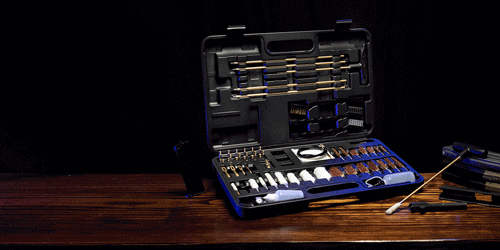How to Dress for Success: Clothing and Gear for Hunting
Dressing properly for hunting is crucial for comfort, protection, and enhancing your effectiveness in the field. Different weather conditions and hunting environments require unique considerations, so here’s a breakdown of essential clothing and gear to help you dress for success in every hunting season.
Base Layer: Moisture Management
The base layer sits closest to your skin, so it’s vital to keep you dry and comfortable throughout the hunt. A good base layer should wick moisture away from the skin to help regulate body temperature. Most people tend to overlook their feet. However, the right hunting socks help you go farther, stay out longer, and move comfortably in any weather by keeping your feet dry and in top shape.
- Material: Look for synthetic materials or merino wool. Both dry quickly and wick moisture better than cotton.
-
Fit: Opt for a snug fit. This layer should be tight enough to transfer moisture away but comfortable enough for long wear.
- Seasonal Adaptation: In colder seasons, a thicker base layer with thermal insulation will help retain warmth. For warmer weather, lightweight and breathable options are best.

Insulating Layer: Retaining Heat
The insulating layer, often referred to as the mid-layer, is essential for colder weather. It traps heat, keeping you warm in chillier temperatures.
- Material Choices: Down and synthetic insulation (like polyester fleece) are great choices. Down provides excellent warmth without added weight, though synthetic materials perform better if they get wet.
- Versatility: Layering is key. Instead of one thick layer, consider wearing several thinner layers to adjust easily as temperatures fluctuate throughout the day.
- Flexibility for Movement: Look for materials with a bit of stretch to accommodate movement when climbing, stalking, or aiming.

Outer Layer: Weather Protection
The outer layer, or shell, protects against wind, rain, and snow. This layer keeps the elements out while maintaining breathability.
- Waterproofing: Choose a high-quality waterproof jacket and pants to keep you dry in heavy rain or snow. Look for breathable waterproof membranes like GORE-TEX for comfortable moisture control. The Gloryfire Poncho features GORE-TEX technology to keep you dry by blocking moisture.
- Windproof: A windproof shell prevents cold gusts from penetrating your layers, which is crucial for open hunting grounds with little shelter.
- Noise Reduction: Opt for quieter materials if your hunt requires stealth. Materials like soft fleece or brushed nylon reduce the rustling sounds that can alert wildlife.

Camouflage: Blending with the Environment
Camouflage is vital for staying hidden from wildlife. The pattern and colors you choose depend on the type of terrain and vegetation in your hunting area.
- Pattern Selection: Woodland patterns blend well in forested areas, while desert camo works best in open, arid environments. Snow camo is essential for winter hunts in snowy landscapes.
- 3D Camouflage: For those hunting in dense vegetation, 3D leaf or ghillie suits add depth to your camo, making you even harder to detect.
-
Head and Hands: Camouflage doesn’t stop with clothing. Use camo gloves, a face mask, or a balaclava to cover exposed skin.
Footwear: Stability and Comfort
Choosing the right footwear is essential to keep you comfortable and safe, especially in rough terrain.
- Hiking Boots vs. Hunting Boots: For warm climates, lightweight hiking boots are often adequate. However, insulated hunting boots are better for cold-weather hunts.
- Waterproofing: Waterproof boots with breathable linings keep your feet dry in wet conditions.
- Traction and Support: Choose boots with sturdy soles for grip and ankle support, especially when walking on rugged or uneven terrain.
- Insulation: In cold weather, insulated boots are crucial. Look for boots with ratings that match the expected temperatures for your hunting location.

Accessories: Essential Additions
A few accessories can go a long way in ensuring you’re prepared for various conditions and challenges in the field.
- Gloves: Insulated, waterproof gloves are best for cold weather, while thinner, breathable gloves are better in warm climates.
- Hat or Cap: A camo hat with a brim can shield your face from the sun. In winter, opt for a beanie or insulated cap to conserve heat.
- Gaiters: These protect your lower legs and ankles from mud, snow, and brush, and they’re especially useful in rugged, wet environments.
Safety Gear: Staying Visible When Needed
In certain hunting situations, especially during rifle season or when hunting in mixed-use areas, wearing high-visibility gear is essential.
- Blaze Orange:Wearing a blaze orange vest, hat, or jacket ensures other hunters can see you while animals generally cannot. Many areas legally require blaze orange for hunter safety.
- Reflective Tape or Markers: If hunting at dawn or dusk, use reflective tape on your gear or backpack to improve visibility to others in low-light conditions.
-
Water and Water Purification System:It helps in removing contaminants and hazardous substances from the water, making it clean and safe to drink.
-
First Aid Kit: It allows you to quickly tend to injuries such as cuts, scrapes, insect bites, burns to prevent the condition from worsening by providing instantaneous care and relief.
-
Fire-making Supplies: Fire is essential to human survival, providing warmth, utility, and comfort. It allows us to cook food at camp, stay warm on cold nights, and purify water for safe drinking.
- Illumination: Whether tracking game at dawn or navigating the woods after sunset, having the right lighting is essential in the wilderness.

Backpack: Gear Storage and Convenience
A good hunting backpack allows you to carry necessary gear, snacks, water, and emergency supplies comfortably. Also, pack lightweight, high-quality items. Carrying a heavy backpack while trekking can be exhausting.
- Size and Weight: Choose a size that suits your trip’s length. For day hunts, a smaller pack will do. Multi-day hunts require larger packs with space for camping gear.
- Quiet Zippers and Materials: To avoid startling game, opt for packs made with soft, quiet materials and silent zippers.
- Hydration System: Consider a pack with an integrated hydration system or bladder to stay hydrated without making noise.
Final Tips for Hunting Apparel
- Layering is Key: Always layer your clothing to adapt to temperature changes. This allows you to add or remove layers as the day warms up or cools down.
- Practice Movement: Move in your hunting clothes to ensure they don’t restrict mobility. Crouch, kneel, and shoulder your weapon to confirm that your clothing allows a full range of motion.
- Plan for the Unexpected: Pack extra socks, gloves, or a rain jacket even if the weather forecast looks favorable. Being prepared for surprises in the field is essential for a successful hunt.
Conclusion
Dressing for hunting success means combining comfort, camouflage, and protection to match your specific environment and hunting style. With the right base, insulating, and outer layers, paired with essential accessories and safety gear, you’ll be well-equipped for a comfortable, safe, and effective hunt in any season.






